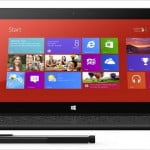It’s impossible to miss one of Apple’s biggest ambitions for the HomePod: control over your home, and a central placement within it.
It’s right there in the name. And yet, the way Apple is trying to set the HomePod apart from direct competitors like Google’s Home and Amazon’s Echo, the HomePod ends up positioned oddly far from what seems like such an obvious goal.
In case you missed its announcement Monday, the HomePod is Apple’s first shot at a smart speaker. It can be used alone or wirelessly synced up with other speakers, and it has built-in Siri for answering questions and taking commands.
But there are three things Google and Amazon do with their smart speakers that Apple doesn’t: they make products that are discreet, they sell them at a more affordable price, and they put a heavy emphasis on what their digital assistants can do.
The first two of those go hand in hand. Google’s Home and Amazon’s Echo Dot (and to a lesser extent, the full-sized Echo) are small enough that they can be slipped into corners or placed unobtrusively on tables, counters, and nightstands. They aren’t necessarily attractive (though the Home can look oddly cute, like a baby speaker that’s yet to finish growing), but they’re mostly ignorable.
With their lower prices — $130 for the Home, $50 for the Dot, $180 for the full Echo — it’s also much more realistic for someone to buy a few and place them throughout the house. That’s encouraged, too, because both Google and Amazon highlight how useful it is to have immediate access to their voice assistants. And that’s being enhanced with new features, like both speakers getting the ability to make calls.
/cdn.vox-cdn.com/uploads/chorus_asset/file/8645113/v_8A0A9690.jpg)
Being able to put these devices in multiple rooms is critical to delivering on the promise of an ever-present assistant and creating the voice-controlled home dreamt up by sci-fi movies. They’re an easy way to turn lights on and off, set alarms, or adjust the climate. But that convenience vanishes if you can’t get voice control in the rooms you end up using the most.
At $350, putting a HomePod in multiple rooms of your house isn’t a very appealing prospect. And while Apple has quite possibly made the most attractive speaker of the bunch, its speaker also takes up a bit more room. The Echo is a utility, designed to be ignored. But the HomePod is a speaker, meant to stand out as one.
There also aren’t as many reasons to spread the HomePod throughout many rooms. Yes, it can be a hub for controlling smart home equipment. But Apple seems to be making its digital assistant a secondary focus, unlike its competitors. Siri will be limited to specific categories that Apple thinks make sense for the HomePod — weather, reminders, unit conversions, and so on — which means you aren’t going to be ordering a pizza, hailing a cab, or making a dinner reservation all by voice.
And it doesn’t seem like that deemphasis is entirely because Siri has fallen behind its competitors. If that were the case, Apple could have used Monday’s announcement — at an event expressly for developers — to offer a way to code deeper, more valuable interactions with Siri. Instead, it didn’t say a word about any of that with relation to the HomePod. It didexpand Siri’s functionality slightly, but those features were limited to iPhones and iPads.
Apple is trying to tap into its heritage as the iPod company to make a product that’s music first, assistant second, despite the name giving the two equal billing. And while there are plenty of good reasons to like the HomePod if you’re looking for a speaker, there are a lot fewer rooms in the house that need one, which means fewer places for Apple to sell them into.
That makes Apple’s smart home play a bit more distant than it initially seemed. The HomePod can deliver the same type of home-controlling functions as Google’s Home and Amazon’s Echo, but it isn’t priced or sized to wind up in every room. Like every element of Apple’s smart home strategy so far, the function is there if you want it, but Apple doesn’t really expect you to use it.
/cdn.vox-cdn.com/uploads/chorus_asset/file/8645119/v_8A0A9683.jpg)
That’s a reasonable position given how niche the smart home market remains. BI Intelligence recently found that only about 10 percent of homes are using smart home tech right now, with more and more expected to join in the coming years. Apple has always shot for the higher end of the market, while Google and Amazon have always shot for mass adoption. So the diverging strategies make sense.
Even so, Apple really does seem to be interested in the smart home market. Its smart home platform, HomeKit, has received regular updates over the past few years, from support for new types of products to a built-in home control app on iOS. And while Apple hasn’t made any HomeKit accessories (aside from, perhaps, the HomePod), it receives licensing revenue for every unit its partners make, which is a pretty good reason for Apple to want this space to take off.
Plus, as a very notable added bonus, every voice query going through Siri is one that isn’t going through Google Assistant or Alexa. Google clearly sees voice as a major component to the future of search, and that’s why it’s been so aggressive about getting into this nascent space.
By going only for the higher end of the market, Apple continues ceding some early smart home turf to its competitors, despite a wide-open opportunity. Apple’s HomeKit platform is the easiest option for someone who wants to start tinkering with smart home tech, and a smart speaker expands that ease of use — but only so far as it can actually get into the spaces people live.
Speakers come in all kinds of shapes and sizes, and so do most of Apple’s products, so it seems reasonable to expect the HomePod line to grow and evolve over time. But until that happens, Apple is allowing Google and, primarily right now, Amazon to establish themselves as the market’s leaders. For a brand-new platform that, like smartphones, could eventually
[Source”timesofindia”]











